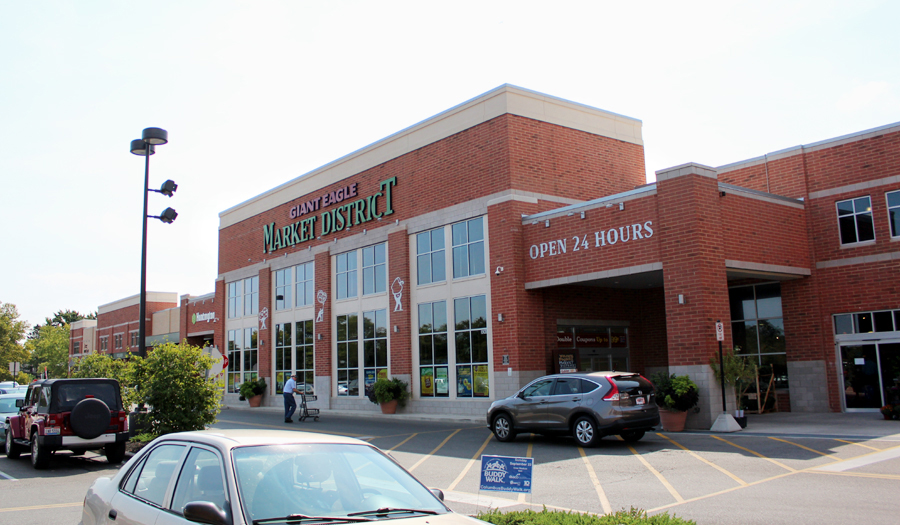
Giant Eagle to spend $100 million to go net zero carbon on emissions by 2040
by Michael Machosky
July 28, 2021
The average supermarket emits the equivalent of 6.4 million pounds of carbon dioxide annually, from refrigerants and electricity, according to the EPA. That’s the same as 635,000 passenger vehicles driven for one year.
Now, the big bird carries a lot of weight in Western Pennsylvania, and a lot of people pay attention to whatever the grocery giant does. So Giant Eagle’s decision to go net zero on carbon emissions is a fairly big deal, and will no doubt be scrutinized by all the competition (limited though it may be in Pittsburgh). Giant Eagle has more than 200 stores across five states but is most concentrated around their hometown, Pittsburgh.
“Our future generations deserve a healthy planet and reducing our impact on the climate is a critical way we can make good on this obligation,” says Giant Eagle President and CEO Laura Shapira Karen. “Giant Eagle has proudly served our communities for nearly a century and we are committed to doing our part to preserve the neighborhoods we call home for another 100 years.”
Of course, they’re giving themselves plenty of time. 2040 is 19 years away, obviously. But a company with so many moving parts — literally, trucks moving produce back and forth — and specialized needs for power, like refrigeration, poses quite a few unique challenges.
Dan Donovan, who’s helping lead the effort for Giant Eagle, sees this change as necessary, and already well underway. He claims the company has already achieved a 22% reduction in carbon dioxide emissions in the last eight years. And the company is ready to spend: $100 is earmarked for “zero carbon” efforts in the next decade alone. They want to have a 50% reduction in carbon dioxide in the first decade, by 2030.
It all began with those ubiquitous blue plastic bags, that Giant Eagle groceries typically come inside (double-bagged), which then become receptacles for recycling.
“Our environmental sustainability journey actually started back in December of 2019, when we publicly committed to eliminating all single-use plastics from our operations,” says Donovan.
They started with the Fox Chapel Market District at the Waterworks, and a few pilot locations in Ohio.
“In a matter of three months, we removed at least 20 million single-use plastic bags from circulation,” says Donovan.
The pandemic put a stop to that experiment — people were worried about possible surface transmission through customers’ own bags, so the blue bags remained.
But the plastic bag effort showed that big changes were possible, even at a company as established as Giant Eagle — which has been in business since 1918 and employs 37,000.
The road to net zero emissions will be traversed by trucks, of course — but all 200-plus in Giant Eagle’s fleet will run on alternative energy, like electricity.
Smart lighting and greener HVAC systems will help with carbon reduction. Going well beyond the individual stores’ footprints, there will be investments into green energy — like direct green power purchasing agreements —and negative emissions technologies like carbon capture, soil sequestration and reforestation.
“We feel it's really important to be able to make aggressive, but achievable and measurable goals,” explains Donovan.
One simple improvement cuts down on the need for constant lighting — skylights.
“We actually have technology in some stores that allows us to control the amount of light emitted from the light bulb sources, based on how much light is coming through the skylights,” says Donovan.
There are also smart power systems that can anticipate jumps in power needed during a heatwave, and ramp up gradually to meet the air conditioning needs, saving power overall. Refrigeration also uses a lot of energy, so updating to the latest, most efficient systems is essential.
As far as the carbon capture and reforestation projects go, this is still in the very early stages.
“We are looking for those opportunities,” says Donovan. “So that I think that becomes the next big wave for us.”
And of course, the best way to cut down on trucking emissions is to buy local.
“I think we will continue our focus on increasing local offerings, explains Donovan. “And our hope, our invitation is for customers who also want to incorporate this goal of decreasing our carbon footprint while shopping with us. We think increasing local offerings is a great way to demonstrate that.”

Leave A Comment